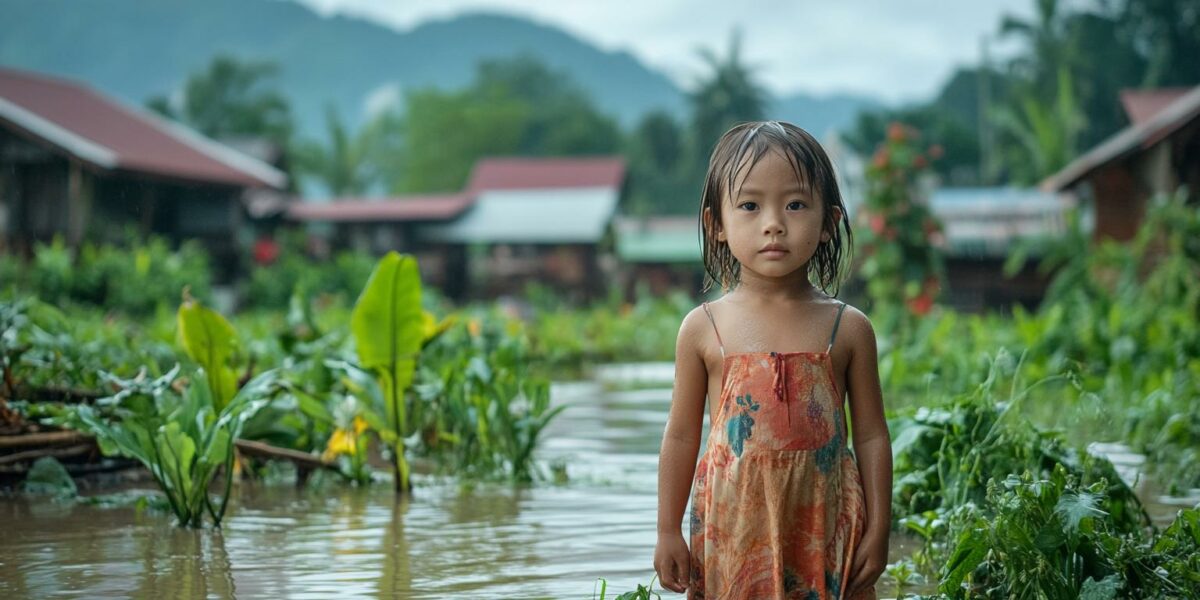UNICEF’s Commitment to Climate Action
UNICEF Lao PDR’s Climate Strategy for 2024-2026 emphasizes the necessity of prioritizing children in climate initiatives. By focusing on the unique vulnerabilities of young populations, the organization aims to ensure no child is left behind in the face of climate adversity.
Recent climate events, including severe flooding and record-breaking droughts, underscore the urgency of this strategy. The alluvial plains of the Mekong River, for instance, have experienced unprecedented environmental shifts, complicating life for many communities.
Air quality in Laos presents another significant challenge. Forest and crop burning have led to some of the poorest air quality levels in the region, posing a direct threat to child health and development.
Heatwaves are also becoming more frequent and intense. These climatic changes demand targeted interventions to protect the most vulnerable, particularly women, youth, and children, from exacerbated risks.
Understanding Risks and Child-Centered Programming
UNICEF’s strategy involves comprehensive assessments to identify climate risks impacting children. The Children Climate Risk Index (CCRI) reveals that Lao PDR scores a concerning 6.7, placing it high on the vulnerability scale.
The interplay of natural hazards and human-induced risks has magnified existing vulnerabilities. This is particularly true for children, who face significant risks due to these environmental changes.
To counter these threats, the UNICEF Lao PDR Country Program Document (CPD) 2022-2026 has highlighted the climate crisis as a pivotal challenge. The document outlines various child rights at risk due to these climate-induced threats.
The approach includes:
- Multi-sectoral climate risk assessments
- Geographical and child-poverty linked evaluations
- Evidence-informed climate programs
These steps are crucial for developing robust climate strategies in Lao PDR.
Collaborative Efforts for Child Well-being
UNICEF collaborates extensively with the Government of Laos, the private sector, and local communities. This integrated effort ensures children and youth are central to climate policies and programs.
The organization’s systemic effort aims to place children at the heart of climate action, fostering a safer and healthier environment for future generations.
By aligning with the 10th National Socio-Economic Development Plan (NSEDP), UNICEF pledges to support Generation 2030. This initiative emphasizes the role of children and adolescents in national development agendas.
Investing in child-centered climate strategies is not just an ethical mandate but a strategic necessity for sustainable development in Lao PDR.
Strategic Interventions and Future Outlook
UNICEF’s climate strategy for Lao PDR involves targeted interventions designed to strengthen the understanding of climate risks. These interventions aim to protect and empower children and their communities.
Mitigation and adaptation strategies are tailored to address specific regional vulnerabilities, ensuring a localized approach to climate resilience.
These efforts are critical as Lao PDR navigates its development path, balancing economic growth with environmental sustainability. By prioritizing the well-being of children, the nation can build a more resilient future.
UNICEF’s commitment to child-centered climate action highlights the importance of inclusive and informed programming. This approach ensures that the most vulnerable populations are supported in the face of evolving climate challenges.



Nathaniel5
Such a bold move! Let’s hope it brings real change and not just more reports.
savannah_wanderlust5
Is there a detailed breakdown of the budget for this climate strategy? Transparency is key!
gabriel_oracle9
How will UNICEF ensure that local communities are actively participating in these programs?
DaisyUmbra
Gr8 move by UNICEF! Hope other countries follow this example. 👍
Layla_Quester0
Why wasn’t this approach taken earlier? The situation sounds really dire!
boots
This sounds great on paper, but how will UNICEF measure the success of these initiatives?
gabriel6
Finally, someone is putting kids first in the climate fight! 👏👏
Jane
Wow, this is amazing! How can we get involved to support UNICEF’s climate strategy in Lao PDR?